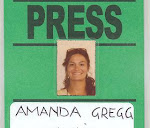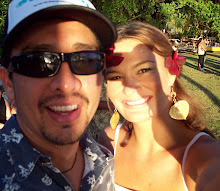By Amanda C. Gregg
Fifth Circuit Judge Kathleen Watanabe was born and raised on the Garden Isle
She started out as a social worker, but soon turned to the law. Today, and every day on the bench, Judge Kathleen Watanabe keeps in mind her deep Kaua’i roots, and the working class values she learned growing up.
Fifth Circuit Judge Kathleen Watanabe talks about her circuitous route to the bench, and how impressed she is with Kaua’i citizens called to jury duty
Her eloquence and forthrightness can be intimidating, but Fifth Circuit Judge Kathleen Watanabe isn’t your average austere adjudicator.
In fact, anyone who has been in Watanabe’s courtroom knows she is just as much about empathizing with those before her as she is about taking her professionalism seriously. It’s a balance that makes it particularly inspirational to watch her handle cases, which have included some of the most historical and ground-breaking the Garden Isle has ever seen.
“I always remind myself I’m dealing with people’s lives and their freedom,” says the Kapa’a High alumna. “The least I can do is be thoroughly prepared.”
Born and raised on Kaua’i, Watanabe has always been driven and has always wanted to do the island proud.
Not your typical child, Watanabe, who fondly remembers spending weekend afternoons with her father at the library, usually asked for books for Christmas. “My father, Silas Aqui, taught us the importance of reading,” she says. “We didn’t have a whole lot of money, but we would spend time reading in the library and I would look forward to that.”
And when it came to her studies, she couldn’t get enough. As a junior in high school, Watanabe was an exchange student with a family in Portland, Ore. “It was such an experience,” she says. “I found there were classes I had never heard of. I found the curriculum to be very hard, so I was determined. I got straight A’s. I felt so happy about that – it was a personal accomplishment. Bringing that home to Kaua’i, I felt like, ‘Look, it can be done.’”
Now a judge, Watanabe has a different determination: to be fair, prepared, thorough and to educate the public.
And when it comes to weighing any kind of judgment, she always, no matter what it takes, takes everything she can into consideration, she says.
“I will consider the presentence investigation report, because they spend a lot of time and effort on that, and the intent is for it to assist the judge,” she says. “But at the same time I don’t follow it blindly, because I believe it is my responsibility to come up with appropriate sentencing. I will consider what the prosecutor and defense attorney have to say. I listen to the defendant, consider the impact statements and any kind of letter of support. … It goes without being said that I am fully apprised of all the information so I can make a fully informed decision.”
It should come as no surprise with the above in mind that Watanabe’s work ethic is something of which she is most proud, yet something for which she doesn’t take direct credit.
In her chambers: ‘I’m always impressed with our citizenry’
“I am a very hard worker,” she says. “I have always been, my entire life. I attribute that to my parents who had six kids, no formal education and struggled their whole lives.”
Watanabe’s family history shows a penchant for working hard, and she describes her maternal Hawaiian grandmother – who worked in the pineapple cannery as a supervisor and as an orderly at the state hospital – as someone who had a strong personality and commanded that things get done a certain way.
“For her time, and as a female, she took on some challenging and hard positions,” she says.
No doubt that description could apply to Watanabe herself. But she also credits some of her attributes to her paternal grandfather and maternal grandparents, she says.
“My paternal grandfather from the Philippines eventually got into the tourist industry as a tour guide,” she says. “He had the gift of gab.”
Watanabe’s maternal grandmother, a picture bride from Okinawa, was a stay-at-home mom who never learned to speak English, and her maternal grandfather also was a “very hardworking Okinawan,” Watanabe says.
“He worked two jobs: as a mason and a dairyman,” she says. “I remember them both working so hard. I say my work ethic is something I got through my grandparents and my parents. It’s what I am most proud of.”
An advocate of the people since she first got her career start in social work, Watanabe always knew she was going to come home after she finished her education. In fact, she initially chose social work over medicine because she believed those extra years of schooling would keep her away too long.
It wasn’t until Watanabe returned to Kaua’i after earning her bachelor’s degrees in sociology and psychology from the University of Puget Sound in Tacoma that she realized she might need further education if she really wanted to make a difference.
“I actually found out I didn’t have a whole lot of authority or influence on program decisions,” she says. “I was that typical social worker-type with grandiose ideas of how to make things better for people. I ended up going on to law school thinking I would become an attorney and then have more authority to make change.”
And she built up quite a resume after making that decision. Following her short career as a social worker, Watanabe attended the University of Hawaii William S. Richardson School of Law, and then quickly got to work as an attorney practicing administrative and employment law. Following that, she became a hearings officer for Hawaiian Home Lands Commission, where she dealt with Native Hawaiians waiting for homestead property.
She then became supervisor of the Employment Law Division as deputy attorney general, where she headed up Human Resources Development until January 2003, when she became director of the entire department.
“I became the client – I thoroughly enjoyed that,” Watanabe says of her tenure as the director of human resources. “I gave the deputy attorneys some headaches. I was determined to contribute and make a difference for the employees and for people who filed cases or claims against the state. It gave me some insight, having been the attorney and becoming the client. I thought it gave me a well-rounded perspective.”
It must have, as following a short two-and-a-half years as a director, former Gov. Linda Lingle appointed the well-rounded attorney as Fifth Circuit Court judge, replacing Clifford Nakea. Watanabe says she was honored by the opportunity, which couldn’t have come at a better time.
“It was the ultimate goal to return home,” she says. “Both my daughters were in college on the Mainland, and it felt good to be serving people on Kaua’i again – my career has always been focused on public service – and being on Oahu gave me an advantage. It made the transition from attorney to judge easier.”
Now halfway through her 10-year appointment as a judge, Watanabe says she hopes she will be retained for another 10-year term.
“I thoroughly enjoy what I’m doing,” she says. “It’s been a whirlwind of experience.”
As for what she loves most about her job, Watanabe alludes again to the public, noting it is the public for which she is most grateful.
“My favorite part of being a judge is presiding over jury trials,” she says. “I have a great deal of faith in our jurors. I’m always impressed at how you can take 12 people who usually don’t know each other very well and make them sit throughout this trial from a couple of days to several weeks, and see how dedicated they are.”
Watanabe, who has presided over more than 100 bench and jury trials, said she continues to have the greatest faith in people.
“I am always impressed by our citizenry,” she says.
If a juror seems to not be enjoying his or her jury duty, Watanabe says she takes that as a personal challenge.
“I want them to gain something from this experience,” she says. “It’s a twoway street. My goal is to have them at the end say, ‘I learned something and I’d do it again.’”
Away from the office, she enjoys reading mystery and suspense novels and traveling with her family. She’s also a movie buff, favoring espionage and action-packed movies.
“My all-time favorite pastime,” she adds, “is being ‘Nana’ to my three grandsons, Dylan, 5; Ryder, 3 months, and Kalaunuiohua, 2 months.








